Managing project risks is a critical factor in ensuring successful project outcomes. Technical risks, such as complex systems or lack of technical expertise, can pose significant challenges. Schedule risks, which can result from poor time management or unexpected events, can lead to missed deadlines and increased costs. Additionally, there are various types of project risks, including financial, performance, external, strategic, and operational risks.
In this article
Part 1. Technical Risks in Projects
Technical risks in projects refer to the potential challenges or uncertainties related to the technology or technical aspects of a project, like IT project risks. Managing technical risks requires careful planning, regular testing, and having contingency plans in place to minimize their impact on project outcomes.
Part 2. Why is it Important to Analyze Project Risks?
Analyzing project risks is crucial for successful project management, whether common project risks or otherwise. By identifying and understanding potential risks, project managers can proactively plan and mitigate their impact.
Project risk analysis also helps in identifying potential obstacles, allocating resources effectively, and setting realistic project goals.
Part 3. Types of Project Risks
Project risks come in various forms. Each type of project risk has its properties and ways to assess and avoid. It helps in mitigating the various types of risks associated with project management.
1. Financial Risks:These risks relate to potential financial uncertainties, such as budget overruns, cost fluctuations, or inadequate funding, and are among the top 10 project risks.
2. Performance Risks: Performance risks involve challenges or uncertainties that can impact the project’s ability to meet its objectives or deliver desired outcomes.
3. External Risks:External risks are factors beyond the control of the project team, such as changes in regulations, market conditions, or natural disasters.
4. Strategic Risks:Strategic risks pertain to uncertainties that can affect the project’s alignment with the organization and its overall strategic goals or objectives.
5. Operational Risks:Operational risks are related to potential challenges or uncertainties in the day-to-day operations of the project, such as resource availability, process inefficiencies, or technology failures.
Part4. Examples of Major Risks in Project Management
Project managers need to ensure proper analysis of project risks and mitigation. Some major project management risks should be avoided at all costs, and doing otherwise can hamper the project significantly.
1. Major Budget Overages: When a project exceeds its allocated budget significantly, it can lead to financial strain, compromised quality, or even project termination.
2. Retention of Skilled Employees: If key team members leave the project, it can impact the project’s progress, knowledge transfer, and overall team dynamics.
3. Procurement and Production Complications: Issues related to procuring necessary materials, equipment, or services can lead to delays, increased costs, or compromised project quality.
4. Resource Mismanagement: Poor allocation or utilization of resources can result in inefficiencies, delays, or inadequate capacity to meet project requirements.
5. Organizational Changes: Changes in the organization’s structure, leadership, or priorities can disrupt ongoing projects, leading to delays, scope changes, or resource reallocation.
Part 5. Creating Project Risk Management Flowcharts with Tools
Tools for creating project risk management flowcharts can help to ensure proper assessment of project risks and mitigation. They can also help to ensure that all stakeholders are aware of the risks involved in the project and that appropriate strategies are put in place to address them.
1) Wondershare EdrawMax
Wondershare EdrawMax is a powerful project risk management flow chart creation tool. It provides a great UI with a comprehensive library of templates and symbols. It also offers a wide range of features, including text formatting, image editing, and 3D effects. Here are the steps to create a project risk management flowchart using the tool:
Step 1: Select the Flowchart Template
- Once you have opened EdrawMax, go to the "Templates" section and select the Flowchart template from the available templates.
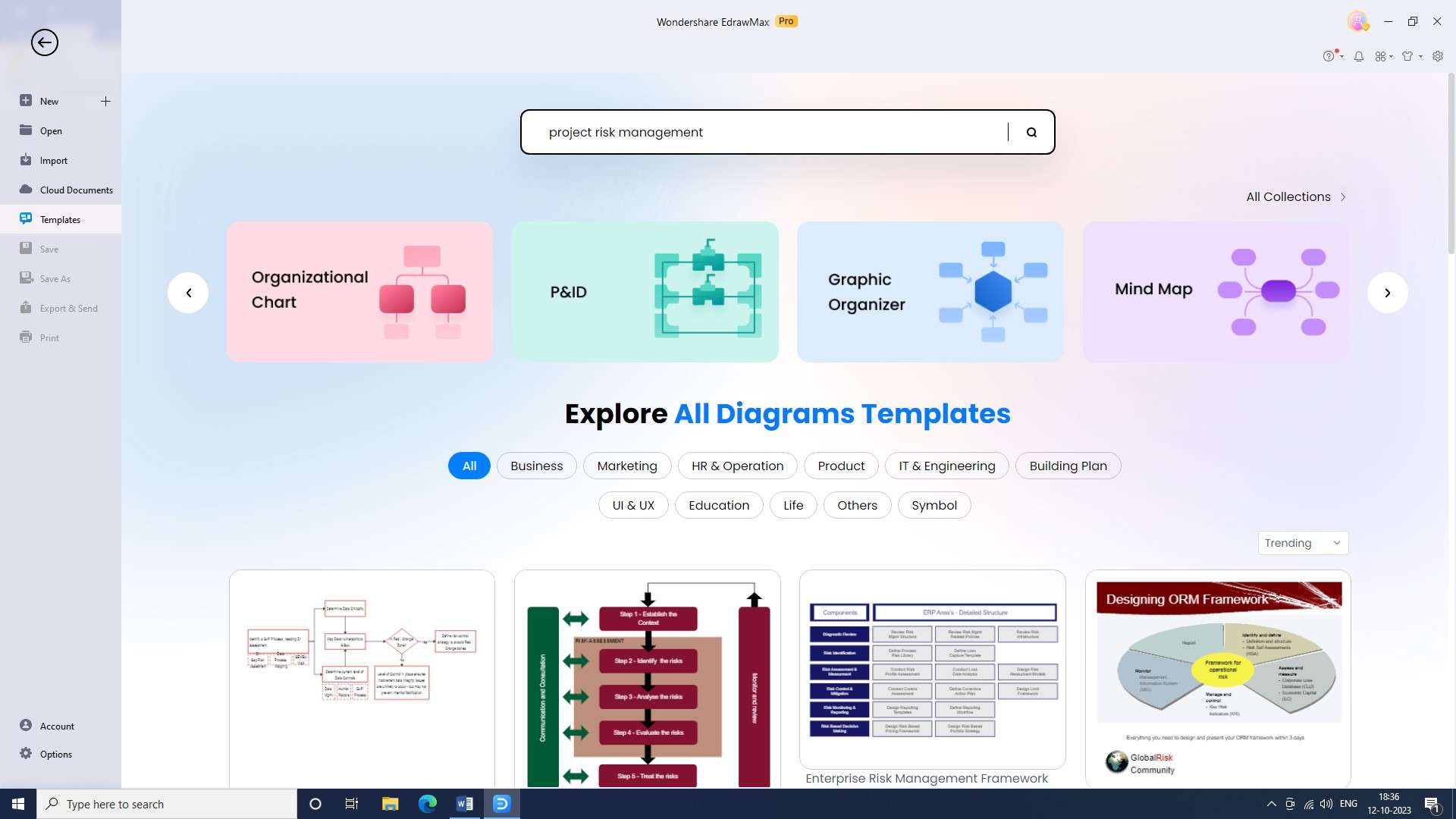
- This will open the template with all the tools and shapes you need to create an effective flowchart for your organization.
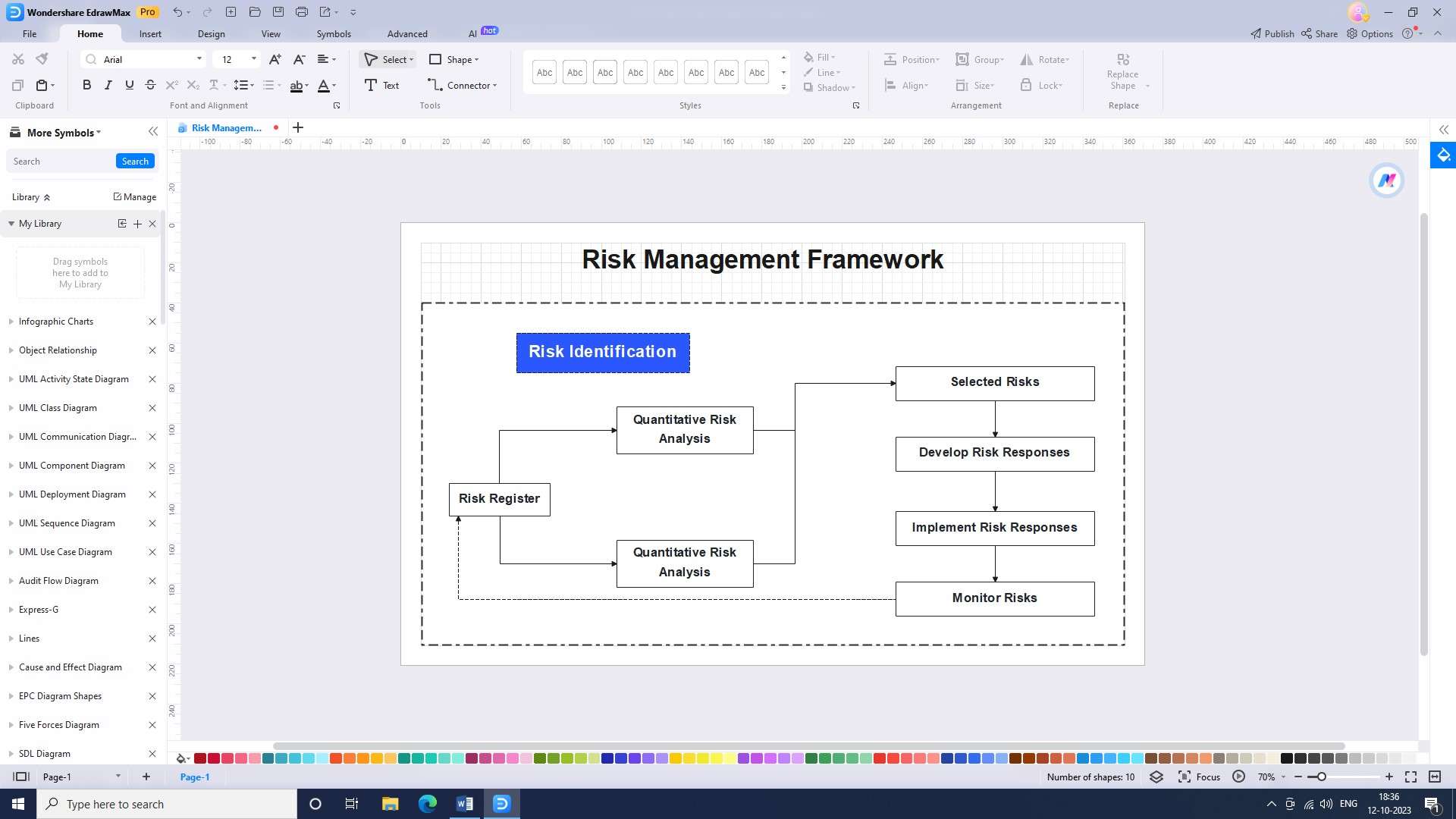
Step 2: Add the Flowchart Shapes
- Start adding the flowchart shapes that will illustrate the process. Use the selection of shapes available in EdrawMax to create the flowchart.
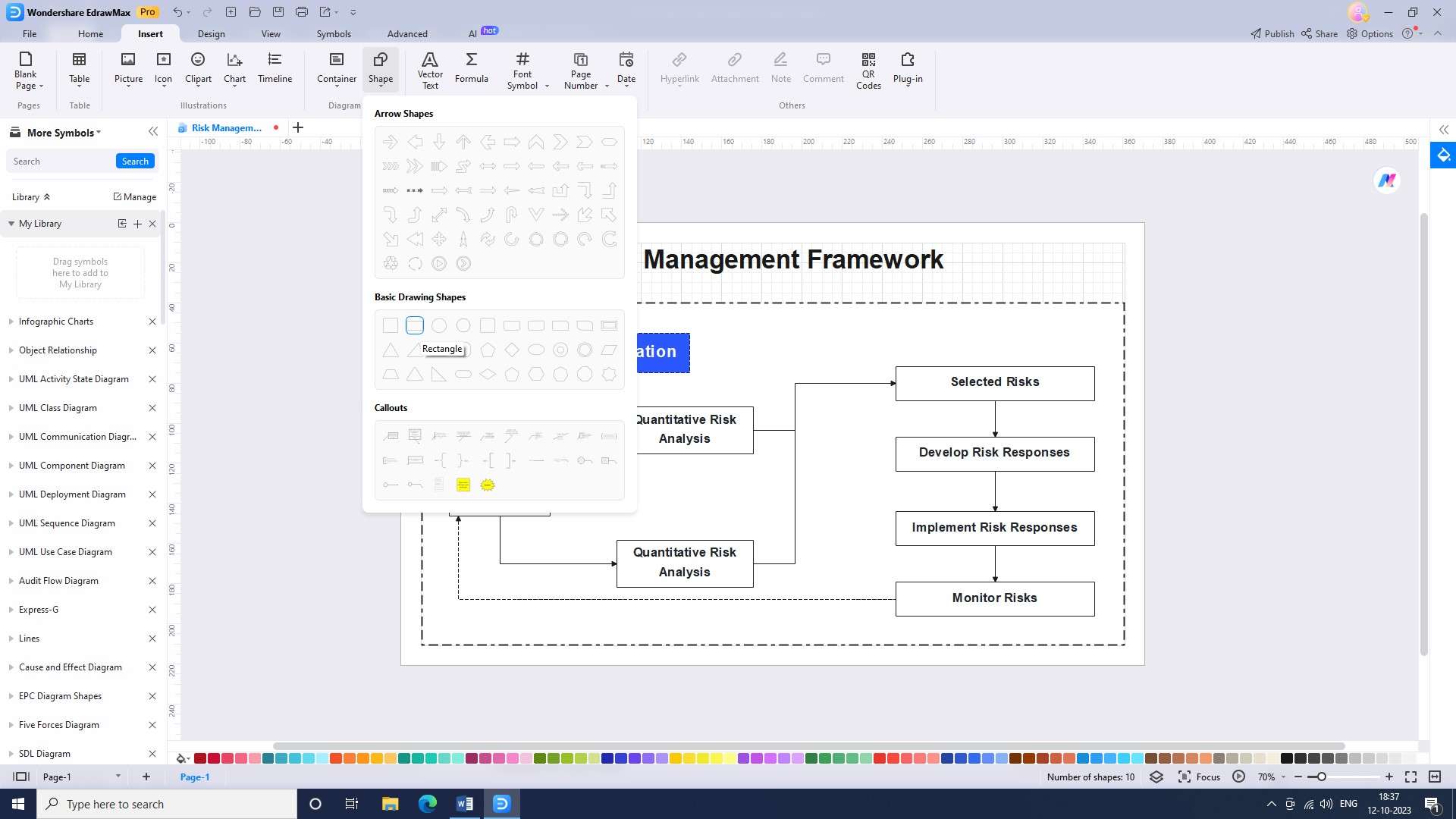
Step 3: Illustrate the Flow of the Process
- Connect the shapes using the arrows to illustrate the flow of the process. This will help the viewer understand the sequence of steps in the project risk management process.
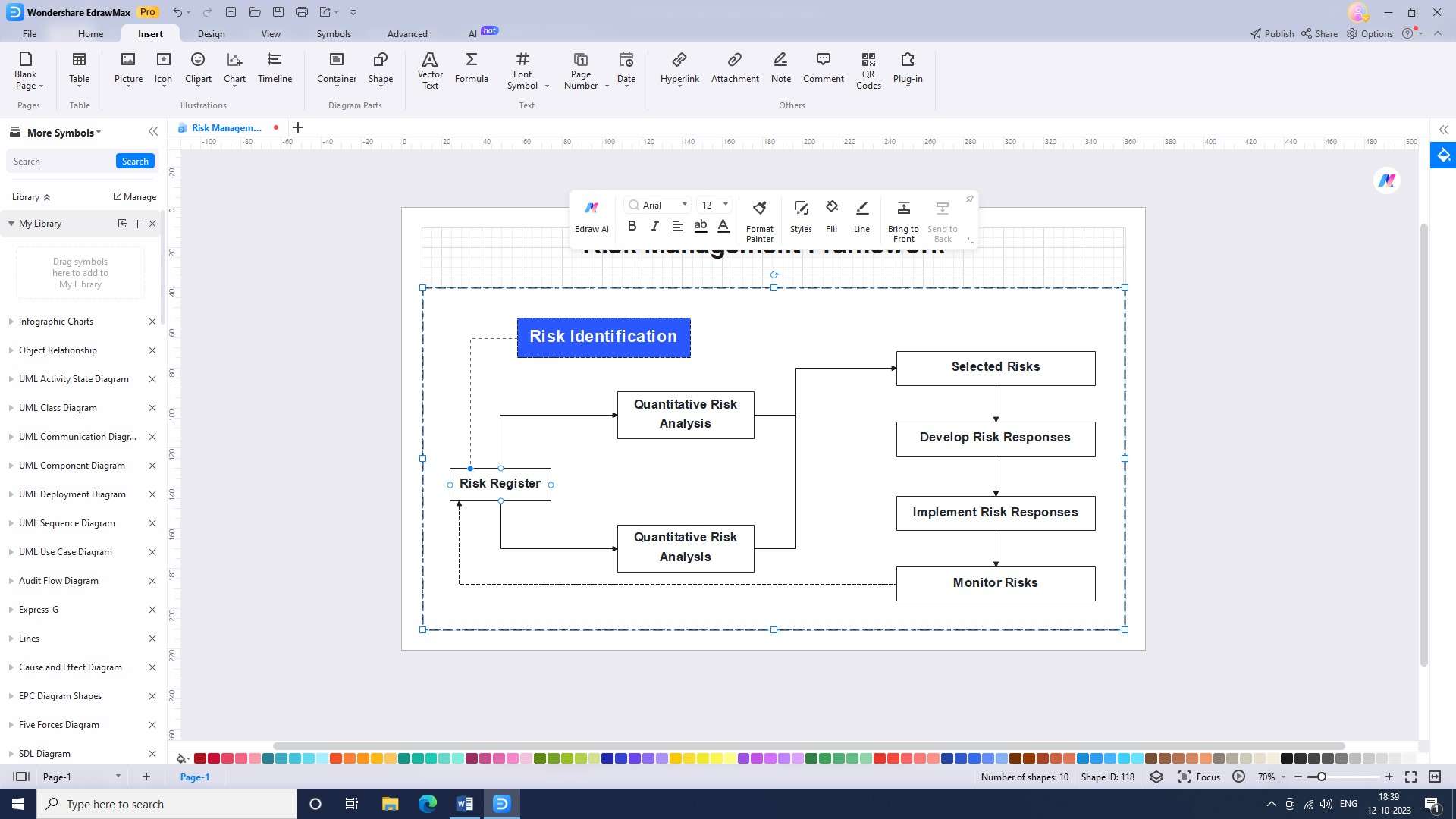
Step 4: Add Additional Details
- You can add additional details to the flowchart to make it easier to understand. This could include notes, descriptions, or even images.
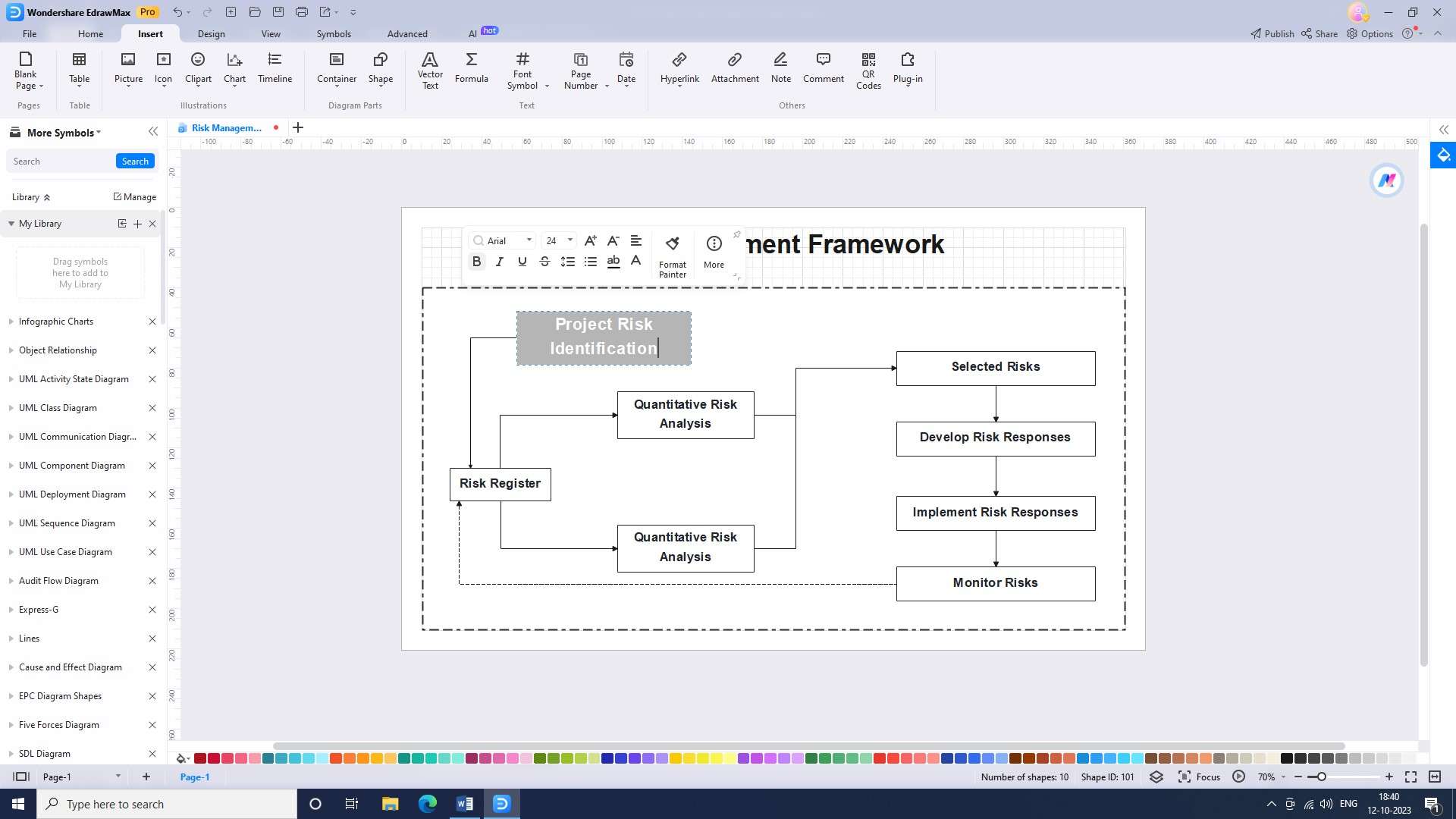
Step 5: Change the Layout
- If desired, you can modify the layout of the flowchart to improve its overall appearance and readability. Go to the “design” section in the toolbar, and change the layout as per your preference.
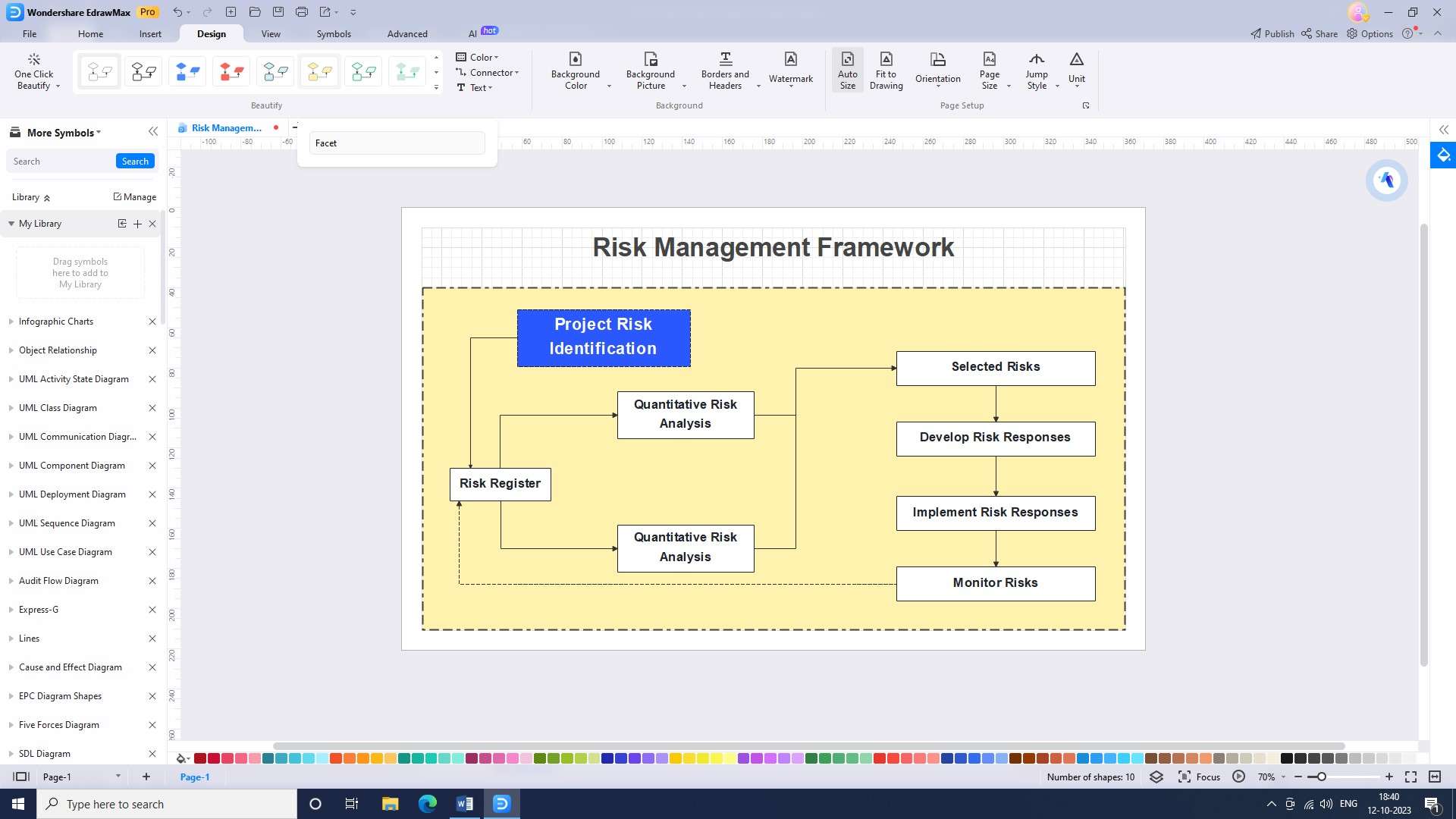
Step 6: Save the Flowchart
- Once you’re satisfied with the flowchart, save it so that you can refer to it whenever you need to. EdrawMax allows you to save the flowchart in a variety of different formats, including PDFs and images.
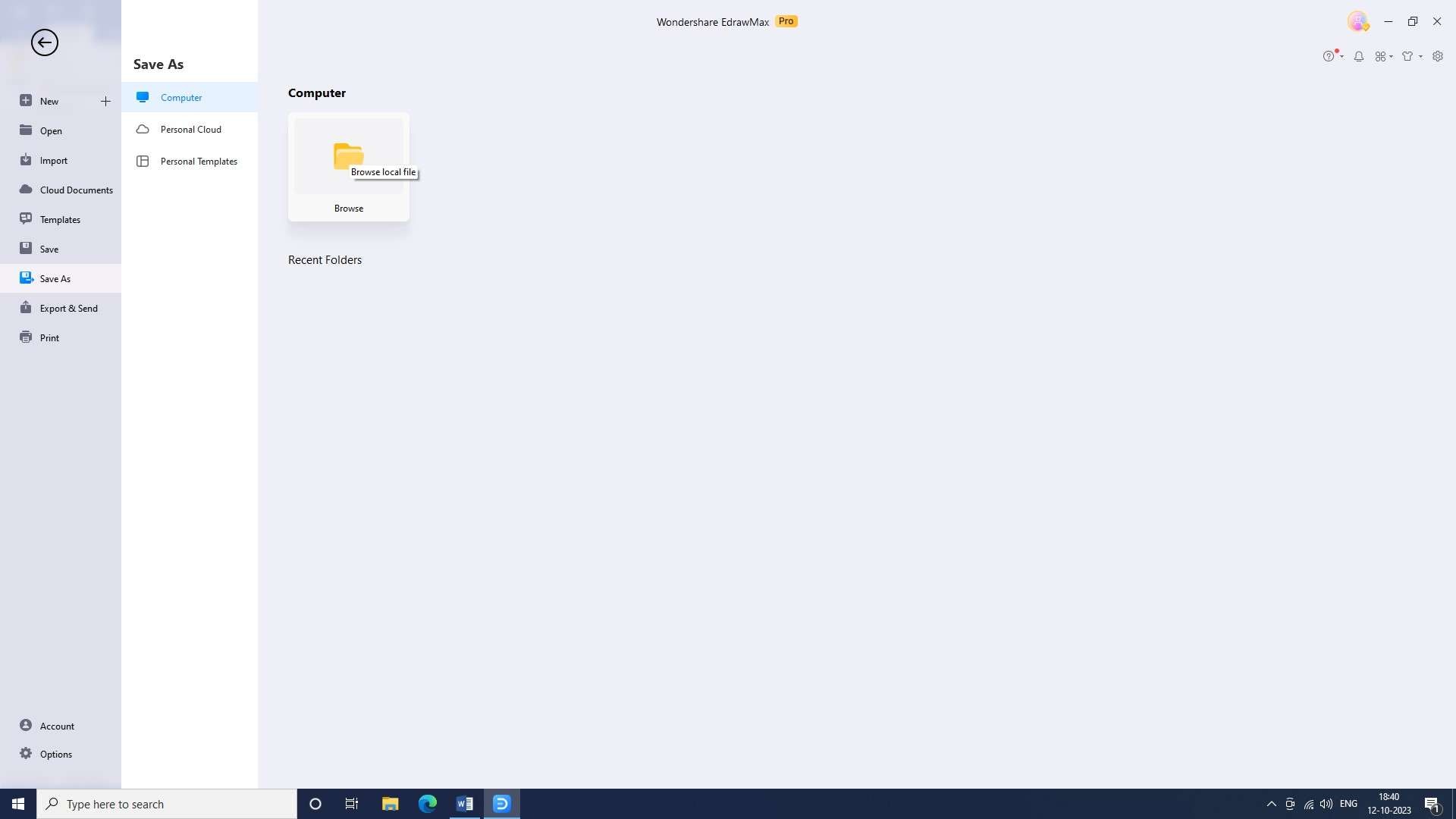
Step 7: Export the Flowchart
- Once you are satisfied with the flowchart, export it in the desired format. EdrawMax allows you to export the flowchart in a variety of formats, such as PDFs, images, or even editable files like Word or PowerPoint."
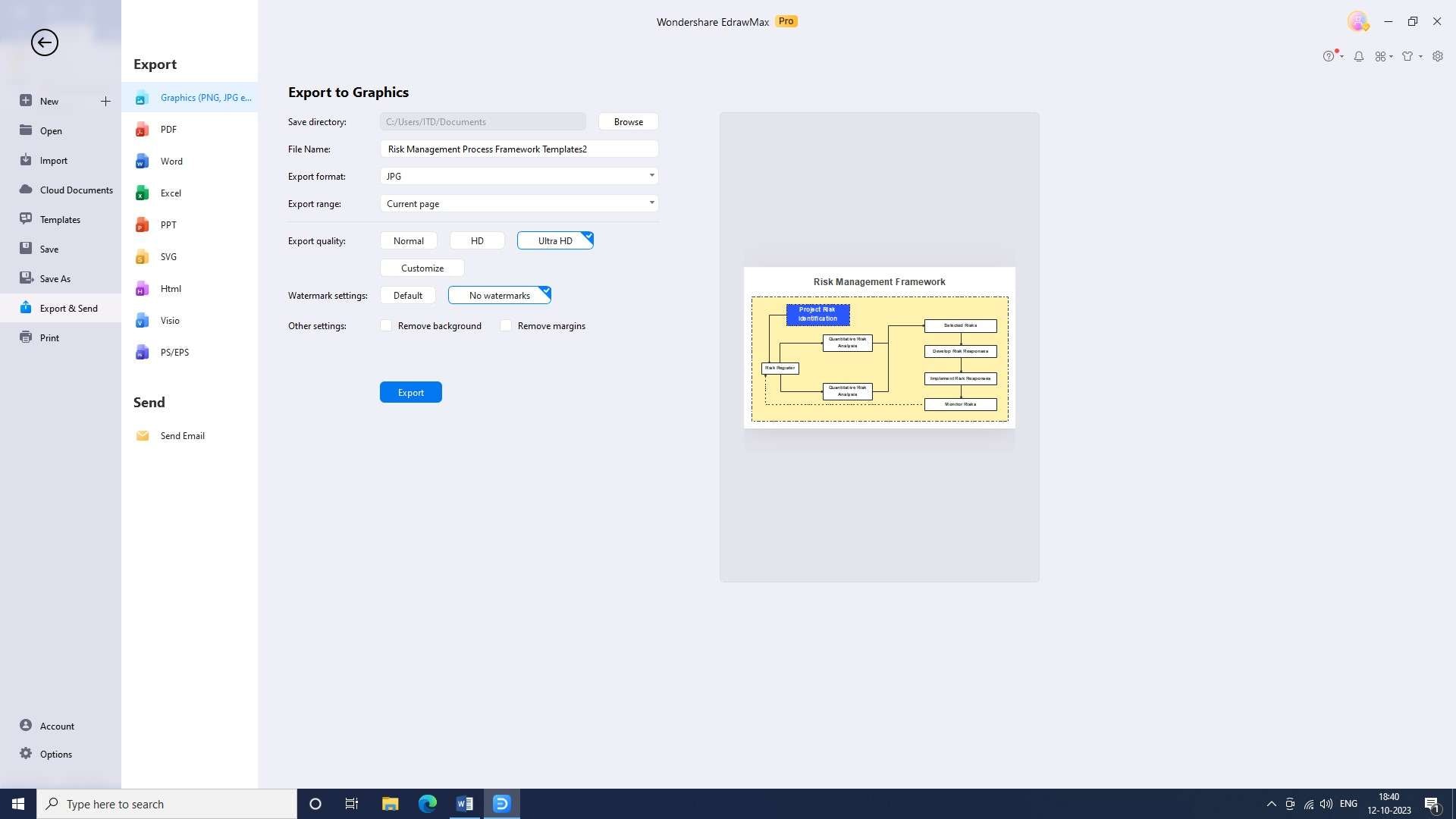
2) ClickUp
ClickUp is an all-in-one project risk management flow chart creation tool. It provides an easy-to-use drag-and-drop interface that enables users to quickly create flowcharts, diagrams, and other visual representations. It also provides powerful collaboration features, allowing users to easily work with teams and clients.
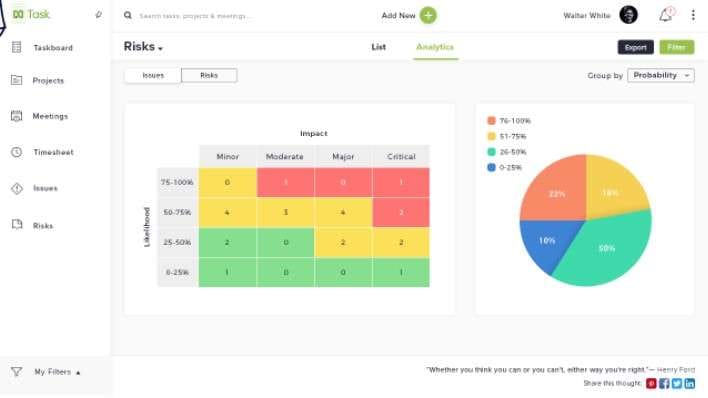
Features:
- Unique feature to map dependencies between risks in a flowchart.
- Advanced algorithm for consistent risk evaluation.
- Risk simulation and what-if analysis feature.
Pros:
- Customizable risk management flowchart templates.
- Collaboration and communication features.
- Comprehensive reporting and analytics capabilities.
Cons:
- No built-in risk assessment tools or methodologies.
- Challenges in managing complex interdependencies.
3) Lucidchart
Lucidchart is a cloud-based project risk management flow chart creation tool. It provides a huge library of templates and symbols, as well as powerful features such as drag-and-drop editing, text formatting, and image editing. Lucidchart also offers real-time collaboration features, allowing users to instantly share and discuss their work with others.
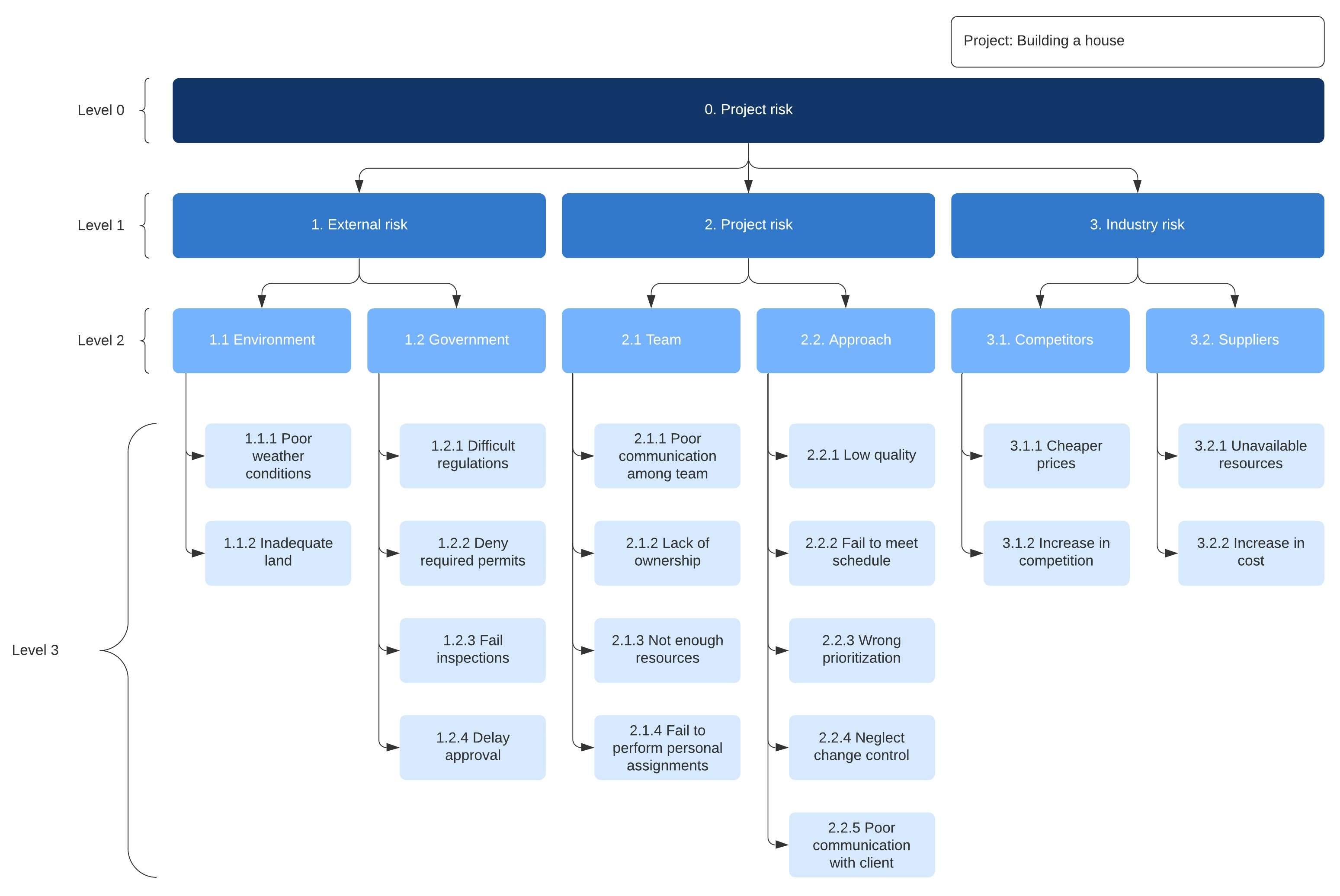
Features:
- Interactive elements to enhance clarity and understanding.
- Side-by-side comparison of risk scenarios.
- Version control and change tracking capabilities.
Pros:
- Seamless integration with popular project management tools.
- Advanced features for visually appealing flowcharts.
- Compliance and industry-specific templates.
Cons:
- Lacks advanced analytics features for risk management.
- Sensitive data stored on external servers.
Conclusion
The analysis and management of project risks play a vital role in successful project management. By identifying and understanding potential risks, project managers can ensure the correct identification of project risks and mitigation. This includes careful planning, regular testing, and having contingency plans in place. Through effective risk analysis, project managers can navigate challenges and meet objectives.





